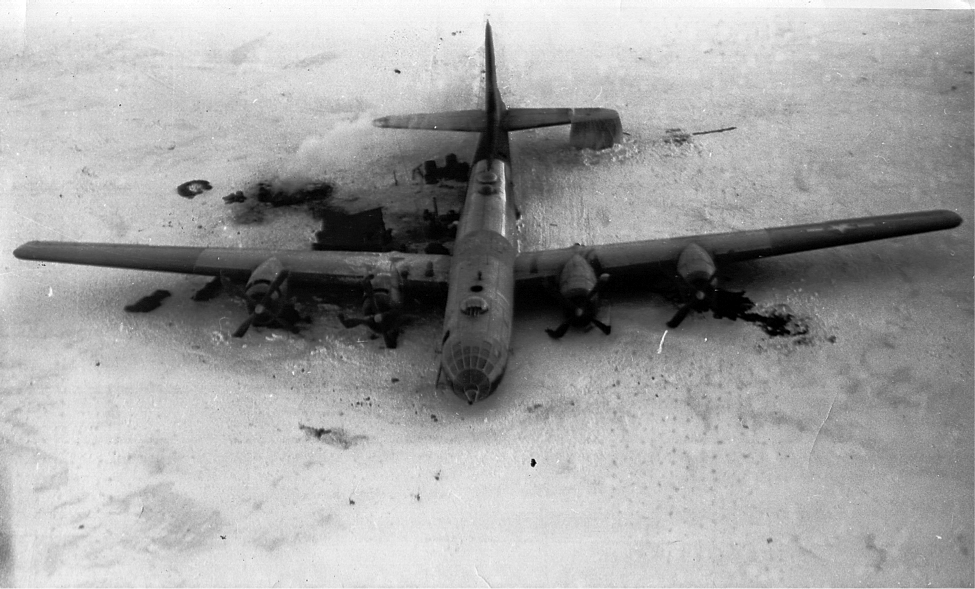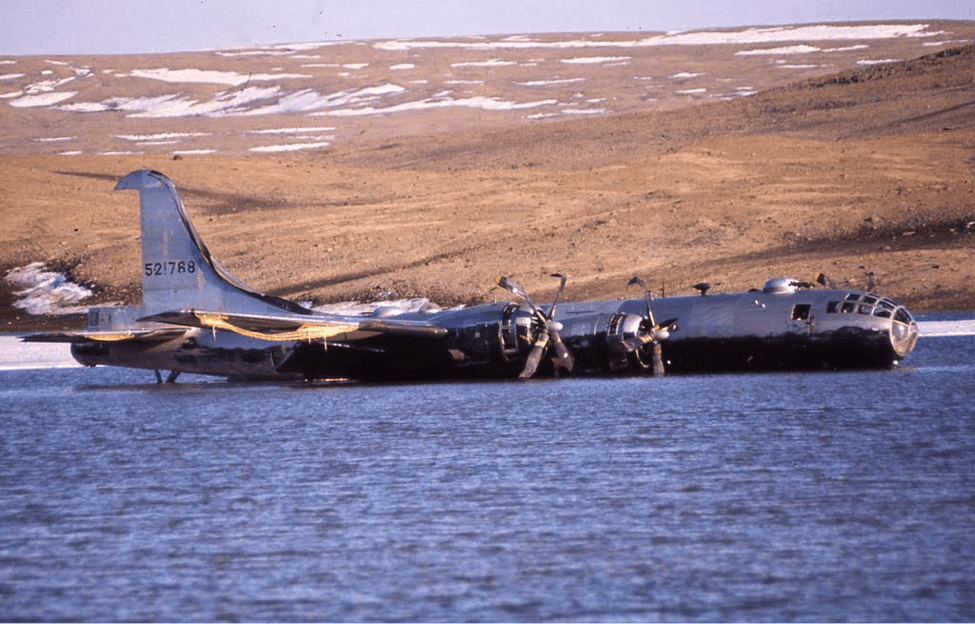On a biting February day in 1947, an error in navigation forced a Boeing B-29 named the Kee Bird, a modified Superfortress assigned to the Strategic Air Command’s 46th Reconnaissance Squadron on a classified mission, to make an emergency landing on a frozen lake in the remote wilderness of northern Greenland. Despite the wheels-up landing, the crew miraculously emerged unscathed. After three days, they were rescued by a C-54 transport, leaving the Kee Bird behind. Classified materials were destroyed or removed before she was abandoned to the elements.
For nearly five decades, the B-29 Kee Bird sat, more or less intact, a ghostly sentinel amidst the icy expanse. Then, in 1994, a glimmer of hope emerged. Daryl Greenamyer, a renowned pilot and aircraft restoration expert known for his speed records and piecing together aircraft from salvaged parts, set his sights on resurrecting the Kee Bird. His audacious plan? To restore the Superfortress on-site and fly it out to Thule Air Force Base in Greenland for further repairs before returning it to the United States.
The US Air Force had long ago relinquished any claim to the Kee Bird. If Greenamyer and his team could successfully ferry the aircraft, it would become only the second airworthy B-29 in the world at the time. Undeterred by the harsh conditions and limited resources, Greenamyer and his team displayed remarkable ingenuity and determination. They replaced the Kee Bird’s engines and propellers, mounted new tires, and resurfaced the control surfaces ravaged by the unforgiving Arctic climate.
However, as winter’s icy grip tightened, tragedy struck. Greenamyer’s chief engineer, Rick Kriege, succumbed to illness, forcing the team to suspend operations before completing the restoration. The Kee Bird would endure one more harsh Greenland winter.
Driven by unwavering resolve, Greenamyer returned in 1995 with additional personnel and equipment. The remaining repairs were finalized, and on May 21st, the B-29 was prepared for takeoff from the frozen lake. A makeshift runway was carved out of the packed snow using an airlifted bulldozer. With engines roaring and everything seemingly in order, the Kee Bird taxied towards a potential rebirth.
But fate, it seems, had a cruel twist in store. A fuel leak from the auxiliary power unit’s jury-rigged fuel tank ignited, engulfing the fuselage in flames. The cockpit crew managed to escape unharmed, but a crew member stationed in the mid-fuselage sustained minor burns and smoke inhalation. Despite valiant efforts to extinguish the fire, the flames consumed the fuselage, leaving only the wings relatively intact. With the dream of flight extinguished, the wreckage, including the nearly intact wing panels and engines, faced the prospect of sinking when the lake thawed.
Despite the devastating fire and unfulfilled dream, the Kee Bird’s legacy endures. In 2014, a NASA Lockheed P-3 Orion captured images of the remnants, a poignant reminder of the audacious attempt.
Though grounded forever, the Kee Bird’s story continues to inspire, a testament to the undying spirit of human endeavor, the allure of aviation history, and the unwavering pursuit of the seemingly impossible. While her final flight remained unrealized, the Kee Bird’s echo soars on, a reminder that even in the face of immense challenges, the human spirit can persevere.












